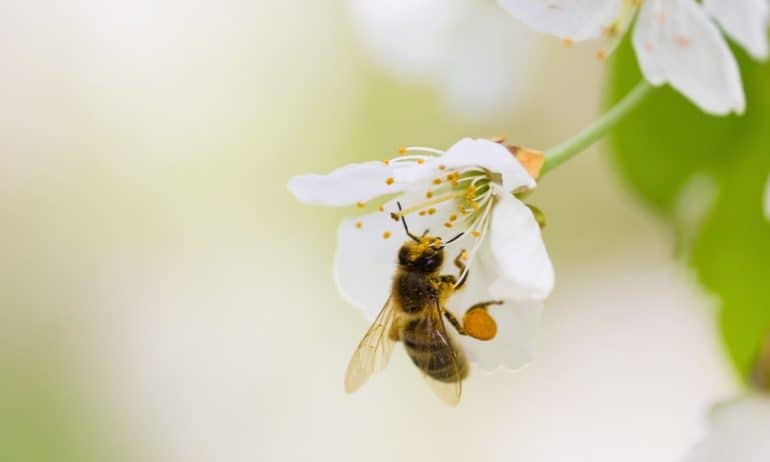Crops are dependent on pollinators such as bees, butterflies, birds, and bats to help plants reproduce, making them critical to global food security. Researchers have noted substantial declines in bee populations over recent years. According to the U.S. Environmental Protection Agency (EPA) and the U.S. Department of Agriculture (USDA), “[t]he number of managed United States honey bee colonies dropped from six million colonies in 1947, to four million in 1970, three million in 1990, and just 2.5 million today.”
Environmental groups such as the Center for Food Safety and the Sierra Club believe pesticides such as neonicotinoids are also hurting bees, and may play a large part in the current decline of bee populations. Neonicotinoids are a chemical pest control that attacks the nerve centers of insects. Also called neonics, the chemical pest agents imidacloprid, clothianidin, and thiamethoxam are currently banned in Europe. Jaqueline McGlade, Executive Director of the European Environment Agency adds, “Based on the body of evidence, we can see that it is absolutely correct to take a precautionary approach and ban these chemicals.” The ban will be up for review in 2015, and if they are ever to be used again in the European Union they must be supported by strong new scientific evidence supporting their safety.
Not all governments or researchers agree with the European ban though. The United Kingdom and the U.S. oppose a neonic ban, citing a lack of evidence and potential damage to agribusiness. They point to other factors, notably; migration timing, viruses, bacteria, nutrition, genetics, and varroa mite infestations which may also contribute to bee population declines. However, supporters like Dr. Lynn Dicks of the University of Cambridge, feel skepticism of the pest control is appropriate. “This is a victory for the precautionary principle, which is supposed to underlie environmental regulation.”













